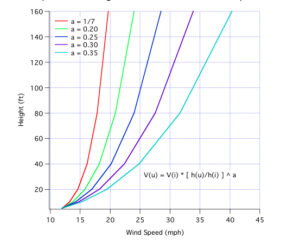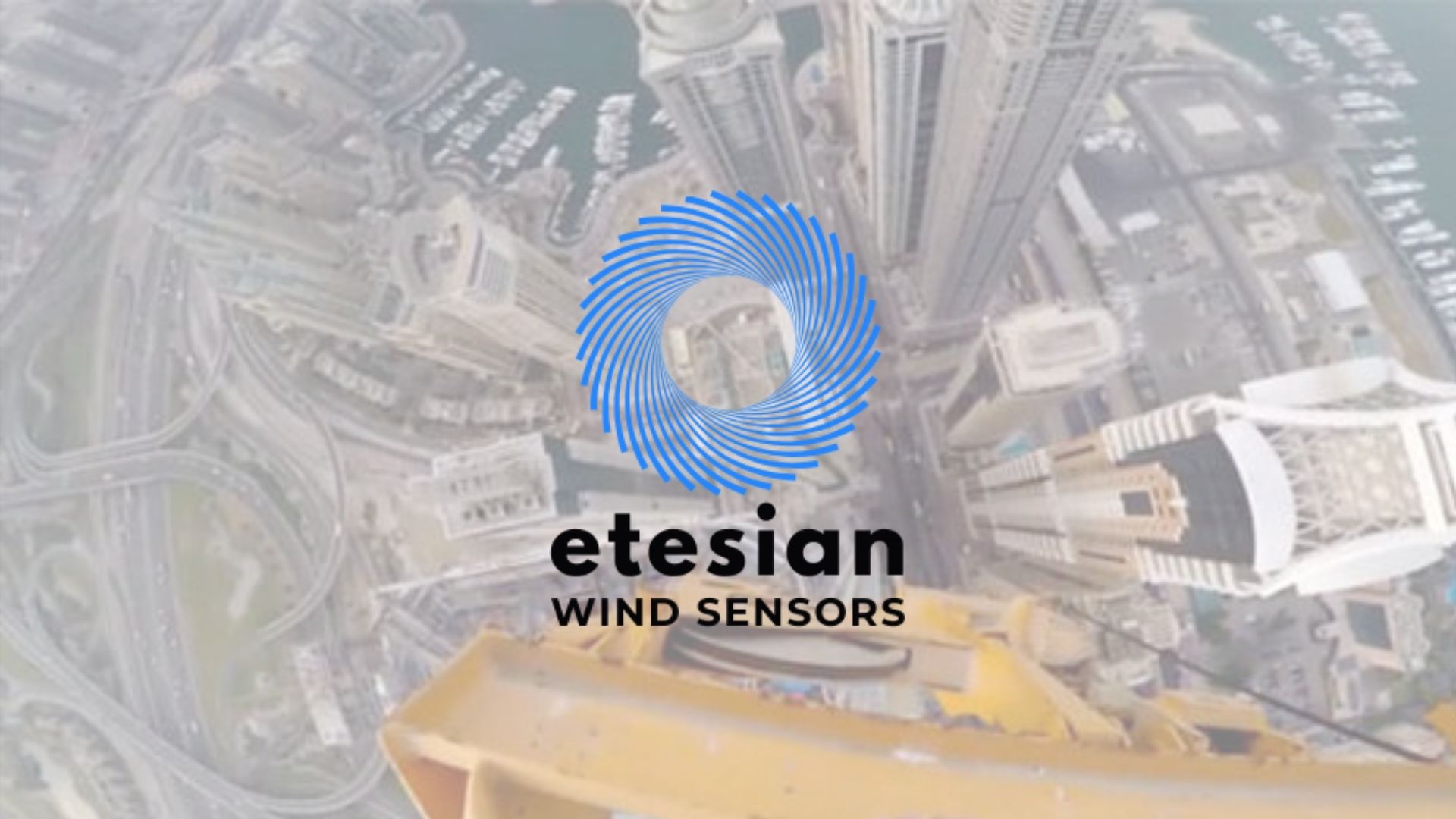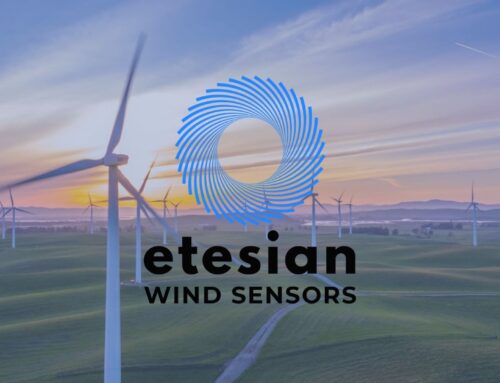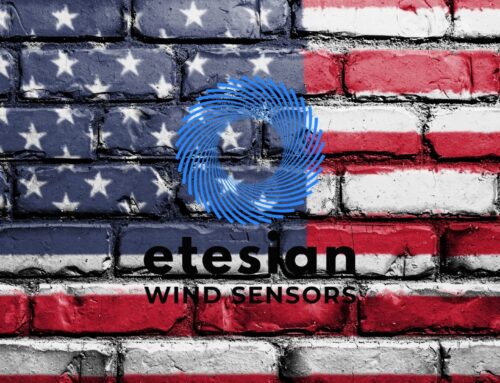I gave a presentation to the IPAF (International Powered Access Federation) and CCAA (Crane Certification Association of America) a while back, and for the most part it was reprinted in Crane and Rigging Hot Line in March of 2014. You can read the whole article here: http://viewer.zmags.com/publication/e1f5d37d#/e1f5d37d/15 Looking back on that article there is one figure that really drives home the importance of placing anemometers at the top of your crane or work platform. Here it is:

What this is showing is the change in wind speed with elevation at a variety of sites, based upon some typical terrains. The plot in red would be typical over a large corn field, lake or ocean. What I have done is to assume the wind is 12 MPH at ground level, and then show how the wind is changing with height. So, for this case, follow the red trace to 100 feet, you can see the wind is about 17 MPH, and going further to 160 feet we have just about 20 MPH. This is the least severe case. The turquoise blue trace is typical in a dense city where building heights affect the wind speed greatly. Here you can see the wind speed increases much more quickly. A wind speed of 12 MPH at ground level could easily be over 30 MPH at just 100 feet.
Maybe this doesn’t seem like much, but you have to factor in to your estimation that forces from the wind are not linear. If you double or triple the wind speed your forces are the square of the change: double the wind speed results in 4X the force, triple the wind speed and you have 8X the force. If you are going to use a hand held wind gauge at ground level, please remember these rules – but better still, for truly accurate wind speed readings you should install a wind gauge on the top of your crane or AWP. Etesian would be pleased to help you select and configure just the right sensor and readout for your specific application. Find more information about our wireless anemometers for cranes here.





